Not entirely sure what to make of it but I am seeing an significant number of empty Apple ad units: "Test Advertisement: This confirms that test ads are running correctly". It also (potentially) confirms that iAds is lacking advertiser supply? It is strange to see big, black, empty ad units across popular apps... particularly with a bold Apple logo beside each. You would think that, at a minimum, Apple would not display an ad unit or would run default ads to iTunes (and deliver a rev share). This strikes me as a bizarre user experience and a very public reflection of the iAds business:

AT&T SMS Notification. Alerts Me of Improving Service...
I received the following SMS from AT&T.First, they alert me that it is a free message (great!). Second, they notify me that my local cell tower has been "enhanced" so I should expect "improved" cell and data quality. One part of me admires the effort to improve quality... and the communications are also admirable.
Another part of me thinks it is a little hokey to deliver an alert via SMS, tell me its a free message, conclude with an exclamation mark, and describe the SMS as a "mktg msg".
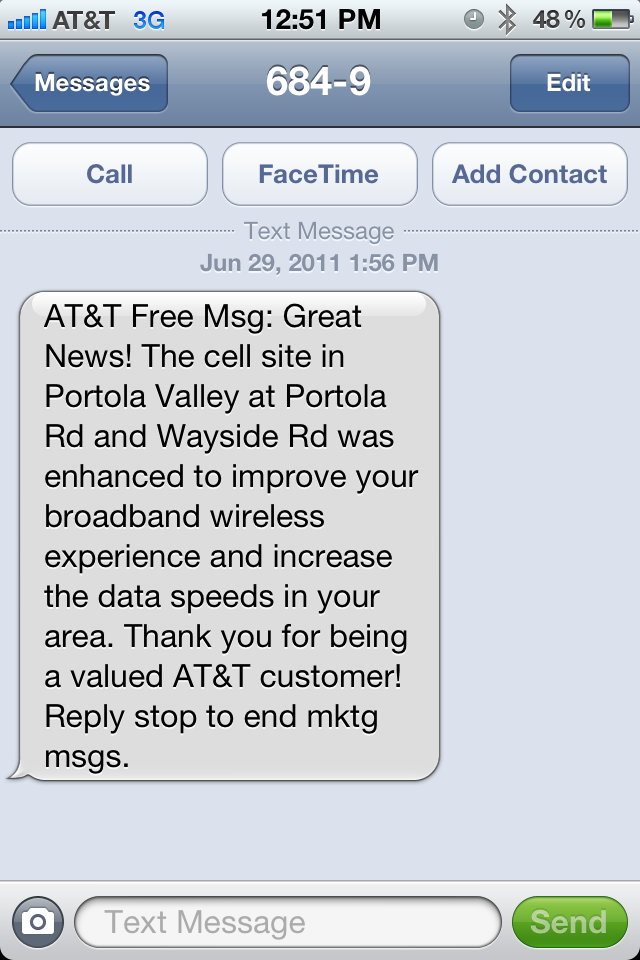
iOS5: Apple's Web 'Reader' is Awesome. But Also a Trojan Horse for Ads?
It's been a year of chess moves between Google, Apple, Facebook and Twitter. For example, look at the last few weeks alone:- Google+ launches as Google's social effort (and its good) - iOS5 is announced with Twitter as a key integration - Facebook is rumored to be working on an HTML5 app store of sorts And is this yet another? One of iOS5's little-discussed features is the web "Reader" tool. When clicked, it converts a webpage to an optimized, stripped page for easier reading... think iBooks for the web. It's great and I find myself using it all the time.
The obvious thought is that it is a way to better integrate the web with iBooks and iTunes. But the next thought is: this is a way to boost iAds throughout the mobile web. They have stripped everything but the text / images and have created a clean reading experience with plenty of room for ad units. Strikes me as another chess move... this time directed at Google and Facebook's ad businesses.
regular page:
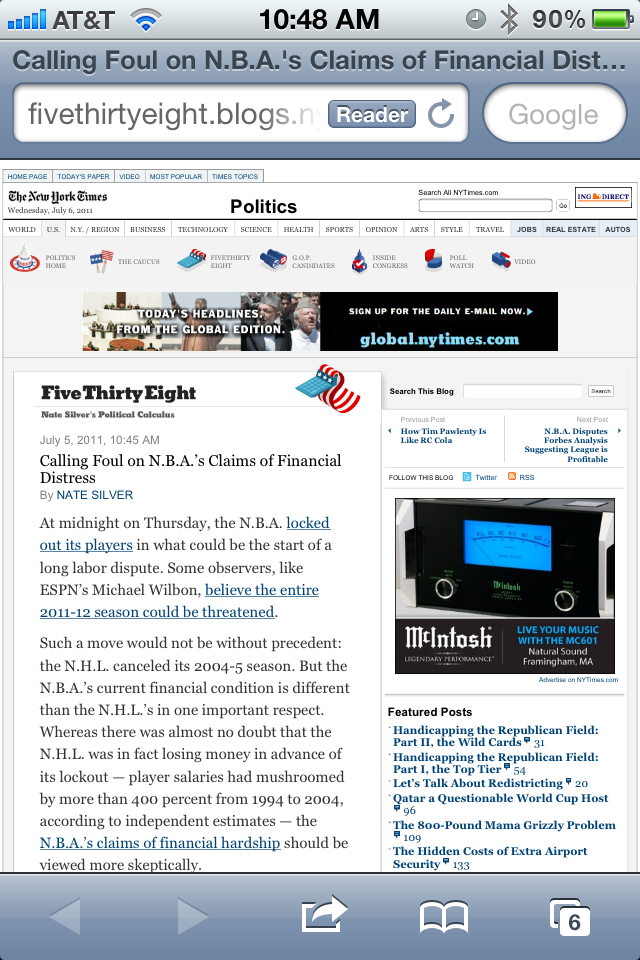
and using Reader:
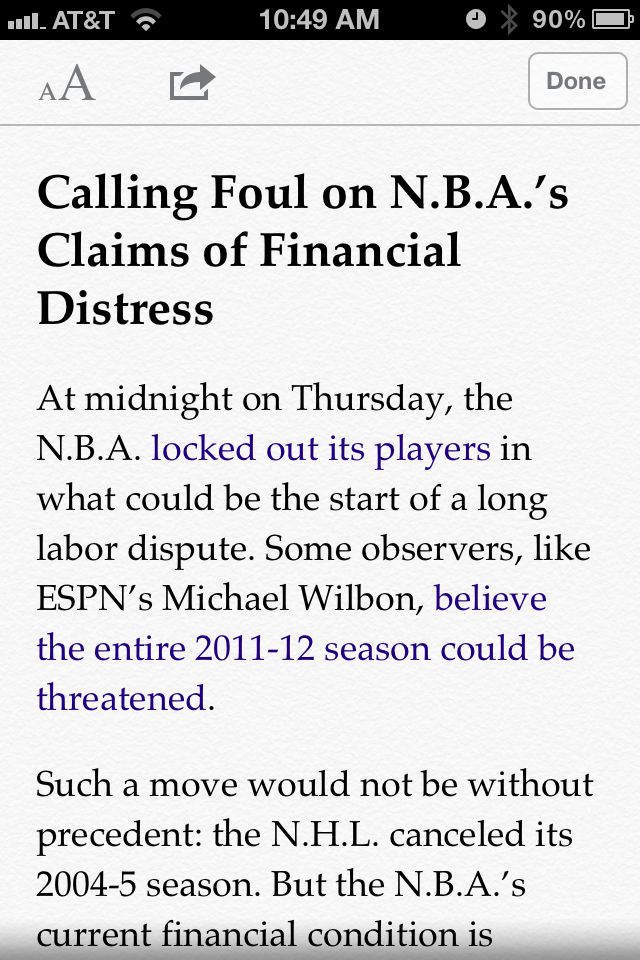
Average iPhone, iPad & iPod Has $100 of Paid Content On It
Noteworthy article on AppleInsider.com yesterday (AppleInsider | iOS 'stickiness' grows as average Apple user has $100 in content per device): the average iOS device (iPhone + iPad + iPod) has roughly $100 of paid content on it. That number represents all content downloadable through iTunes: applications, music, movies and books. More impressively, the average has risen to ~$100 from ~$80 in the last year - and that is as 75m new iOS devices came onto the network.
Not only is the average high and ramping significantly - it suggests a very high switching cost. To leave Apple, you are losing $100 of paid content and - in many cases - are unable to even replace that content on other networks / OS's because of limited inventory.
This is strengthened by Apple's new iCloud - which allows users to easily transfer content (apps, music, videos, etc) from device to device. This previously was a very painful activity... and, at times, it actually deterred me from buying some content. That is solved with iOS5 and I find myself buying more content because it is instantly accessible on all of my devices.

Facebook Favorite Places
As Facebook Places ramps (via mobile, deals, etc), Facebook has started promoting Favorite Places. It is a module that asks users which Place they prefer (this or that). The two choices seems to be either Places you have checked in or have explicitly liked:

Once you vote, two new places are presented.
You have a choice to few your favorite places - which lists all of the places you voted for in an expanded window. However, it is not accessible via a webpage, tab, etc. For this to ultimately be useful, I imagine that will change - and it will effectively create some sort of social map. This seems to be a test to gather data and determine what the output can / should be.
Lots of ideas on that:
- Better page / brand recommendations - Facebook Places overlayed on a social map - Deeper mobile integration with location and notifications - Deeper Deals integration - Way to collect / share deeper data with page-owners and advertisers
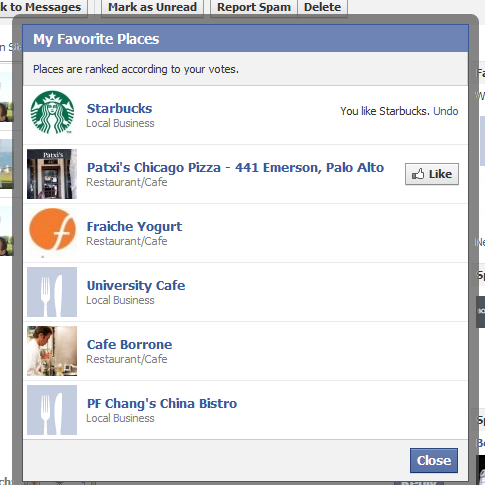
Roger Ebert Reminds Us That Content Presentation is Important
One of the top iPhone Applications at the moment is Roger Ebert's Great Movies (currently featured by Apple / iTunes). With all due respect to Roger Ebert - who has a long career of movie reviews and insights - the application is a simply a presentation layer for content that already exists and is already accessible. And yet it has become a popular application that users are willing to pay money for.... so why is this worth writing about? It is a reminder that content presentation is very important. It is also a reminder that good content is desirable and, unfortunately, often too difficult to access. And making existing content more appealing is apparently worth paying for:
- better presentation layer - augmenting with new content sources - more accessible - native to a different environment (ie mobile, tablet, browser) - etc
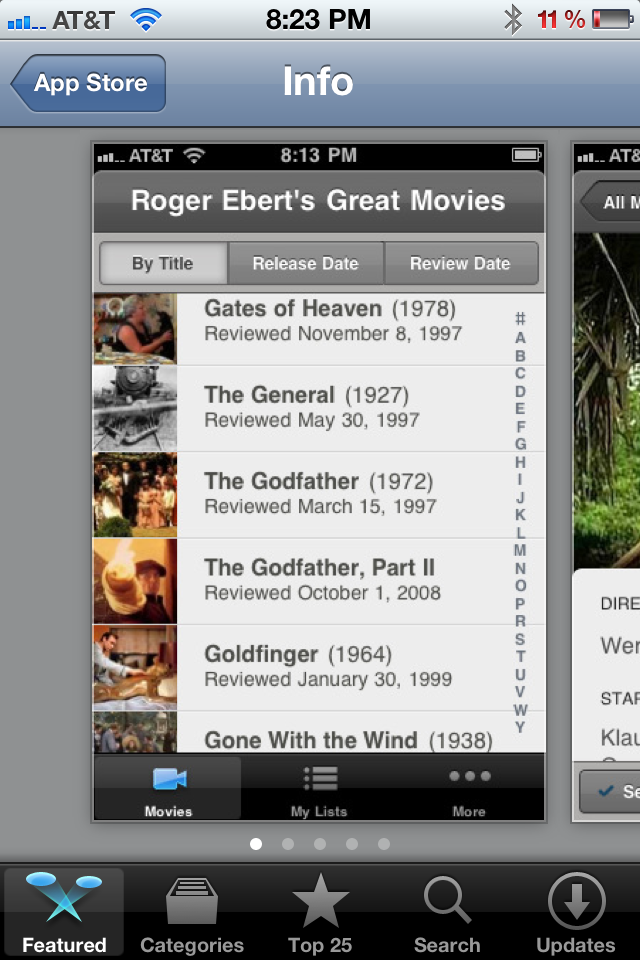

Five Reasons (And Screenshots) to Not Overlook Google+
The Google+ launch has been well received and, for the most part, I have been very impressed by the product (it feels more complete, usable and social than other recent Google products). But they still have a long, long way to go to earn share from the social giant, Facebook. I am not saying that Google+ will take down Facebook (far from it), but here are five reasons not overlook it just yet. I think that Google has created something that lives between Twitter's public world and Facebook's 'private' world - and they will arrive upon interesting use-cases / audiences:
Universal, new header that extends across Google properties and their enormous reach

From the header to the search results: promotion / inclusion throughout the SERPs

Ability to create a robust contact platform - between GMail, Google+, Apps, etc

Notifications are key to engagement & retention. Google has ample opportunity to deliver notifications: email, screen real estate, etc

Mobile: we know a hefty percentage of Facebook's activity is via mobile. Google has enormous reach as well (Android, iOS, search, etc).
Also worth noting the new mobile header / cross product promotion for mobile

Facebook Places Promotes User Reviews, Places Categories
More Facebook Places experimentation (is it clear enough yet that Places is gaining strategic importance?): When friends check-in to Facebook Places and the newsfeed story is posted, friends are prompted to "Add a Category" for that Place. When clicked, it asks users "What Type of Place is This?" That categorization then appears on the Place's page. With Facebook's massive user base (now 750m+), this is a powerful way to crowd-source local classifications:
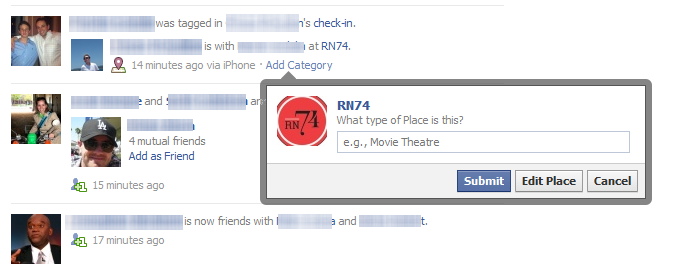
Facebook Places is also encouraging users to write reviews that are either public or shared only with your network... again, Facebook's scale and social graph should be a threat to local reviews:

8/10, 15/25 Top Grossing iPhone Apps are Freemium.
I like to check in on Apple's top grossing applications - it's a good indication of mobile app and publisher trends. And from time to time, I have written about those trends. ... and here is a relatively important trend: each of the current top iPhone apps is freemium (">we've seen hints of this in the past, but never to this degree). Eight of the ten top grossing apps are free and fifteen of the top twenty-five. These come from a variety of publishers and are almost entirely games - only one app is not a game (#21 iMuscle is a health related app - $1.99).
This is a natural evolution of improved game mechanics and better in-app purchasing flows.... both lead to more effective premium upgrades / monetization while preserving iTune's distribution potential. For example: In January 2010, only three of the twenty-five top grossing apps had in-app purchasing enabled. Now, most of the top-grossing apps are distributed as free downloads and monetize in-application.

